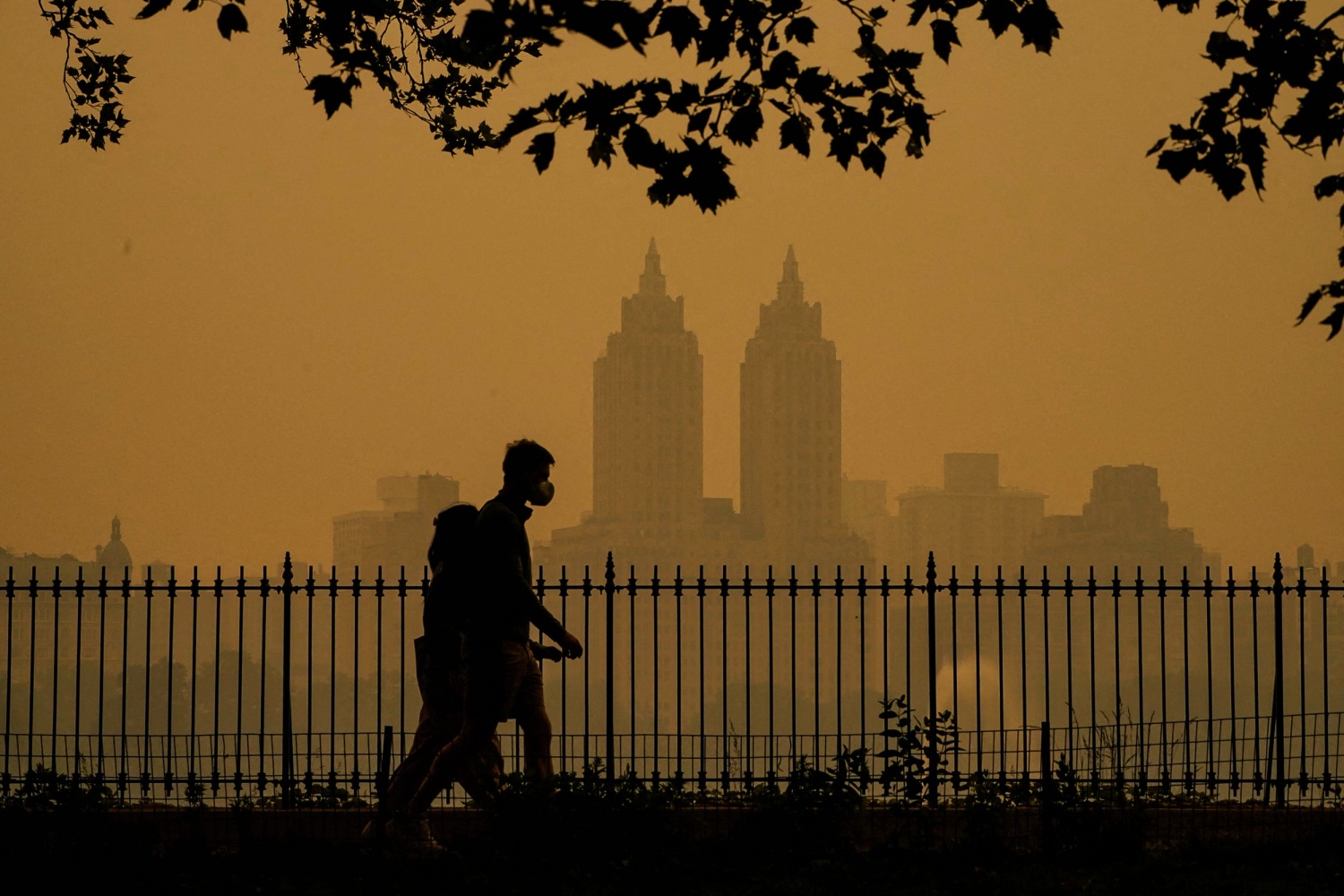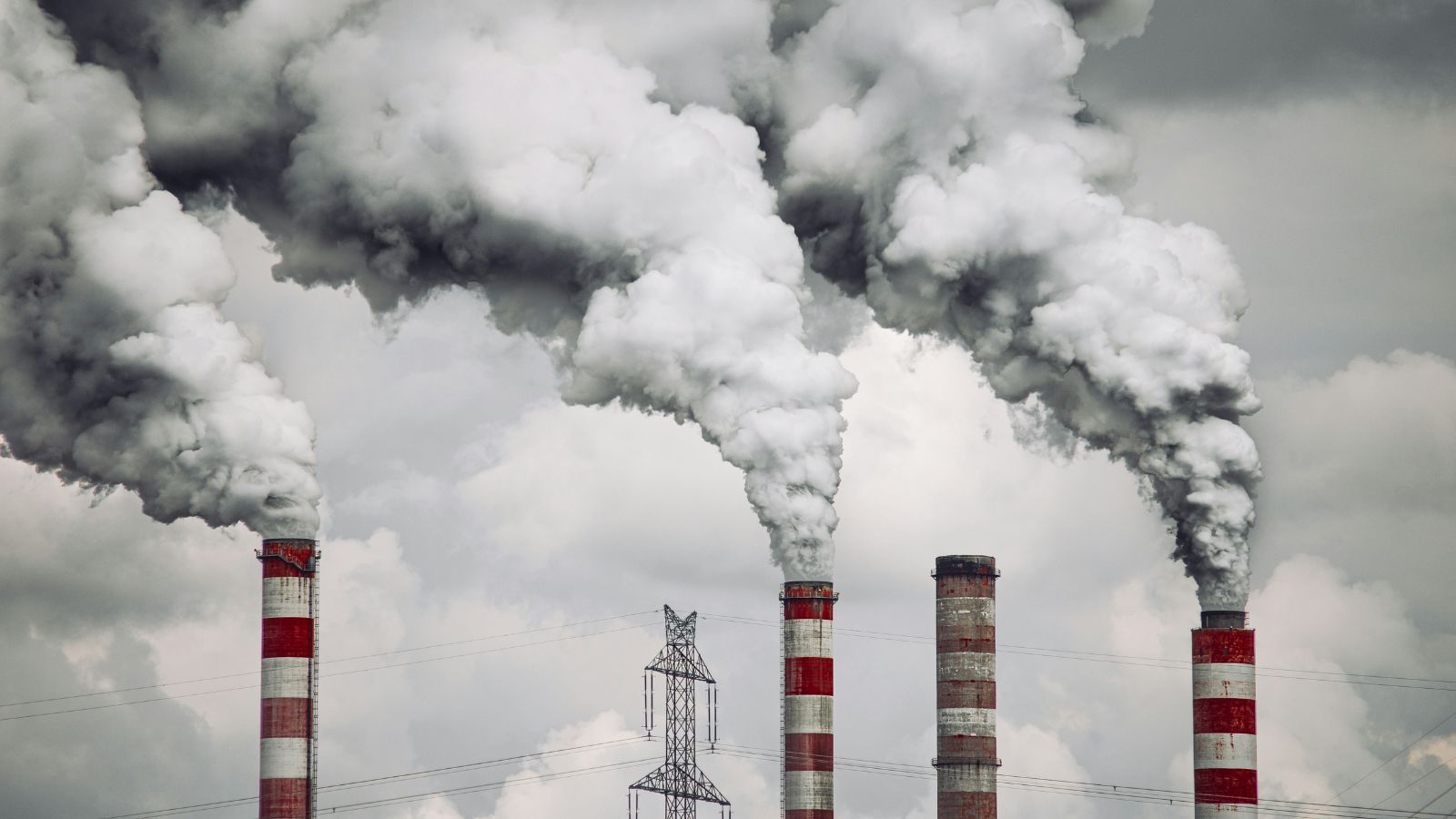Burning Fossil Fuels Worsens Air Quality – Climate Central

Report on the Interlinkages of Fossil Fuels, Air Quality, and Sustainable Development Goals
1.0 Executive Summary and Key Findings
This report analyzes the critical relationship between fossil fuel combustion, deteriorating air quality, and the obstruction of key United Nations Sustainable Development Goals (SDGs). The analysis indicates that pollutants from fossil fuels present a dual threat: heat-trapping gases that accelerate climate change and airborne pollutants that directly harm human health. This dynamic threatens to reverse progress made in public health and environmental protection, disproportionately affecting vulnerable populations and undermining global sustainability targets.
- The combustion of fossil fuels is a primary source of both greenhouse gases and harmful air pollutants, directly impeding progress on SDG 13 (Climate Action) and SDG 3 (Good Health and Well-being).
- Air pollutants, particularly fine particulate matter (PM2.5) and ground-level ozone, are responsible for millions of premature deaths annually, representing a significant challenge to achieving SDG 3.
- Climate change, driven by fossil fuel emissions, exacerbates air pollution through increased frequency of extreme weather events like heatwaves and wildfires, creating a negative feedback loop that stalls progress toward SDG 11 (Sustainable Cities and Communities) and SDG 15 (Life on Land).
- Strategic transitions to clean energy sources offer co-benefits, simultaneously advancing climate action (SDG 13), promoting clean energy (SDG 7), and improving public health outcomes (SDG 3).
2.0 The Impact of Air Pollution on Health and Equality
2.1 A Global Health Crisis Undermining SDG 3: Good Health and Well-being
Air pollution stands as the foremost environmental threat to human health globally. The World Health Organization attributes over four million premature deaths each year to outdoor air pollution, primarily from exposure to PM2.5. These particles, less than 5% of the width of a human hair, penetrate deep into the lungs and bloodstream, causing severe cardiovascular and respiratory illnesses. The primary sources of PM2.5 and ground-level ozone, another harmful pollutant, are directly linked to the burning of fossil fuels in power plants, industrial facilities, and vehicles. Despite legislative progress in some nations, such as the U.S. Clean Air Act, hundreds of millions of people continue to live in areas where air quality fails to meet health standards, posing a direct threat to the achievement of SDG 3 targets for reducing mortality from non-communicable diseases.
2.2 Exacerbating Disparities and Contravening SDG 10: Reduced Inequalities
The health burden of air pollution is not distributed equally. Vulnerable groups, including children, the elderly, and pregnant women, face heightened risks. Furthermore, there are significant disparities across socioeconomic and racial lines. Low-income communities and people of color are often exposed to higher levels of pollution and experience a greater risk of premature death from PM2.5 exposure. This inequitable impact directly contravenes the principles of SDG 10, which calls for reducing inequality within and among countries.
3.0 Climate Change as a Threat Multiplier for Air Quality
3.1 The Vicious Cycle of Emissions and Extreme Weather (SDG 13 & SDG 15)
The continued reliance on fossil fuels is the principal driver of climate change, a core challenge to SDG 13 (Climate Action). The warming climate, in turn, intensifies conditions that degrade air quality. This report identifies two primary mechanisms:
- Extreme Heat and Ozone Formation: Rising global temperatures create ideal conditions for the formation of ground-level ozone, a key component of smog. Prolonged heatwaves can also lead to air stagnation, trapping pollutants in the lower atmosphere and intensifying exposure for urban populations, thereby impacting SDG 11 (Sustainable Cities and Communities).
- Wildfires and Smoke Pollution: Climate change increases the frequency and intensity of “fire weather”—hot, dry, and windy conditions. This leads to more widespread wildfires, which release vast quantities of PM2.5 and other pollutants. Wildfire smoke has been shown to stall or even reverse decades of air quality improvements, impacting both human health (SDG 3) and terrestrial ecosystems (SDG 15).
4.0 Strategic Pathways to Sustainable Solutions
4.1 Aligning Climate and Air Quality Goals with SDG 7 and SDG 11
Addressing the interconnected crises of climate change and air pollution requires integrated solutions that advance multiple SDGs. The Fifth National Climate Assessment identifies several key actions that yield co-benefits for climate, air quality, and public health, directly supporting SDG 7 (Affordable and Clean Energy) and SDG 11 (Sustainable Cities and Communities).
- Transition to Electric Vehicles: Replacing gasoline and diesel vehicles with electric alternatives eliminates tailpipe emissions of smog-forming pollutants and reduces greenhouse gas emissions from the transport sector.
- Expansion of Renewable Energy: Shifting electricity generation from coal- and gas-fired power plants to wind and solar power is the most effective way to cut emissions of both greenhouse gases and air pollutants from the power sector.
- Electrification of Buildings: Replacing fossil-fuel-powered appliances, such as gas furnaces and stoves, with efficient electric alternatives like heat pumps reduces direct emissions and can improve indoor air quality.
4.2 Policy Considerations for Integrated Action
While many climate solutions improve air quality, policymakers must be aware of potential trade-offs. For instance, certain forms of biomass energy may reduce carbon emissions compared to fossil fuels but can contribute to particulate air pollution if not properly controlled. Conversely, reducing atmospheric aerosols is beneficial for health but may remove a cooling effect, potentially accelerating warming. A holistic approach is therefore essential to maximize synergies and ensure that actions taken to achieve one SDG do not inadvertently undermine another.
Analysis of the Article in Relation to Sustainable Development Goals
1. SDGs Addressed or Connected to the Issues Highlighted
-
SDG 3: Good Health and Well-being
The article extensively discusses the health risks associated with air pollution from burning fossil fuels. It states that air pollution is the “leading environmental health threat to people worldwide” and causes “over 4 million premature deaths each year.” It specifically mentions pollutants like PM2.5 and ground-level ozone causing health issues, cardiovascular damage, respiratory illness, and premature death, with vulnerable groups like children, the elderly, and pregnant women being more susceptible.
-
SDG 7: Affordable and Clean Energy
The article identifies the burning of fossil fuels (coal, oil, gas) as the primary source of air pollution and greenhouse gas emissions. It proposes solutions centered on a transition to clean energy, such as using “Wind and solar power” to replace fossil fuel-fired power plants and promoting “Electrification in homes and businesses” by swapping fossil-fuel appliances for electric alternatives like heat pumps.
-
SDG 11: Sustainable Cities and Communities
The focus on air quality within populated areas directly relates to this goal. The article notes that “approximately 156 million people in the U.S. currently live in counties with air pollution levels above national health standards.” It discusses pollutants like PM2.5 and ground-level ozone that “affect the most people in the U.S.” and points to tools like AirNow for monitoring local air quality, highlighting the urban and community-level impact of pollution.
-
SDG 13: Climate Action
This is a central theme, as the article links the burning of fossil fuels directly to climate change. It explains that “heat-trapping pollution from burning fossil fuels has caused the planet to warm rapidly,” which in turn exacerbates air quality issues through “dangerous extreme weather events, like wildfires or extreme heat.” The article also mentions national strategies like the “Fifth National Climate Assessment” that integrate climate and air quality solutions.
-
SDG 10: Reduced Inequalities
The article points out the inequitable burden of air pollution, stating that the “global disease burden disproportionately affects people living in low- and middle-income countries.” Within the U.S., it highlights that “People with low incomes and people of color are among those who may be at increased risk of premature death from fine particle pollution,” addressing the social justice dimension of environmental health.
2. Specific Targets Identified
-
Target 3.9: By 2030, substantially reduce the number of deaths and illnesses from hazardous chemicals and air, water and soil pollution and contamination.
The article directly supports this target by quantifying the health crisis, citing that “outdoor air pollution causes over 4 million premature deaths each year” and that fossil fuel use is responsible for “at least half of all U.S. deaths due to fine particle pollution.” The entire discussion on the health effects of PM2.5 and ozone aligns with the goal of reducing deaths and illnesses from air pollution.
-
Target 7.2: By 2030, increase substantially the share of renewable energy in the global energy mix.
This target is addressed in the “Climate solutions can be air quality solutions” section. The article advocates for replacing fossil fuels with “Wind and solar power,” which are key components of increasing the renewable energy share. It notes that fossil fuel-fired power plants produce “one-quarter of U.S. greenhouse gas emissions,” framing renewables as the solution.
-
Target 11.6: By 2030, reduce the adverse per capita environmental impact of cities, including by paying special attention to air quality…
The article’s focus on air quality in populated areas connects directly to this target. It mentions that “156 million people in the U.S. currently live in counties with air pollution levels above national health standards” and discusses the EPA’s identification of “nonattainment areas” that must reduce air pollution, which is a mechanism for improving urban environmental quality.
-
Target 13.2: Integrate climate change measures into national policies, strategies and planning.
The article provides examples of this integration by referencing the “Clean Air Act of 1970” and the “Fifth National Climate Assessment.” These are national-level policies and reports that address the interconnected issues of emissions, air quality, and climate change, demonstrating the kind of integrated planning this target calls for.
3. Indicators Mentioned or Implied
-
Indicator 3.9.1: Mortality rate attributed to household and ambient air pollution.
The article provides explicit data points for this indicator, such as “over 4 million premature deaths each year” globally from outdoor air pollution and “approximately 15,000 wildfire particulate matter deaths in the U.S.” from 2006-2020 attributed to climate change.
-
Indicator 11.6.2: Annual mean levels of fine particulate matter (e.g. PM2.5 and PM10) in cities (population weighted).
This indicator is central to the article’s argument. It repeatedly names “fine particulate matter (PM2.5) and ground-level ozone” as key pollutants. It also provides metrics related to this, such as the “156 million people in the U.S. currently live in counties with air pollution levels above national health standards” and points to tools like “AirNow” which provide real-time data on “local ozone and PM2.5 levels.”
-
Indicator 7.2.1: Renewable energy share in the total final energy consumption.
While not providing a direct percentage for the renewable share, the article implies this indicator by contrasting the problem with the solution. It states that “Coal- and gas-fired power plants currently produce one-quarter of U.S. greenhouse gas emissions” and presents “Wind and solar power” as the alternative. Progress would be measured by the reduction in the former’s share and the increase in the latter’s.
-
Disaggregated data on health impacts by socioeconomic and racial groups.
The article implies the need for this indicator to track progress on SDG 10. By stating that “People with low incomes and people of color are among those who may be at increased risk of premature death from fine particle pollution,” it highlights a disparity. Measuring the reduction of this disparity would require tracking mortality and morbidity rates from air pollution, disaggregated by race and income level.
4. Summary Table of SDGs, Targets, and Indicators
| SDGs | Targets | Indicators |
|---|---|---|
| SDG 3: Good Health and Well-being | Target 3.9: Substantially reduce deaths and illnesses from air pollution. | Indicator 3.9.1: Mortality rate attributed to ambient air pollution (e.g., “over 4 million premature deaths each year”). |
| SDG 7: Affordable and Clean Energy | Target 7.2: Increase substantially the share of renewable energy. | Indicator 7.2.1: Renewable energy share (implied by advocating for “Wind and solar power” to replace fossil fuels). |
| SDG 11: Sustainable Cities and Communities | Target 11.6: Reduce the adverse per capita environmental impact of cities, paying special attention to air quality. | Indicator 11.6.2: Annual mean levels of fine particulate matter (PM2.5) in cities (e.g., “156 million people in the U.S. currently live in counties with air pollution levels above national health standards”). |
| SDG 13: Climate Action | Target 13.2: Integrate climate change measures into national policies and planning. | Indicator 13.2.1: Number of countries with integrated policies/strategies (e.g., mentions of the “Clean Air Act” and “Fifth National Climate Assessment”). |
| SDG 10: Reduced Inequalities | Target 10.2: Empower and promote the social inclusion of all. | Disaggregated Data: Mortality/morbidity rates from pollution disaggregated by income and race (implied by stating “People with low incomes and people of color are… at increased risk”). |
Source: climatecentral.org

What is Your Reaction?
 Like
0
Like
0
 Dislike
0
Dislike
0
 Love
0
Love
0
 Funny
0
Funny
0
 Angry
0
Angry
0
 Sad
0
Sad
0
 Wow
0
Wow
0













































































